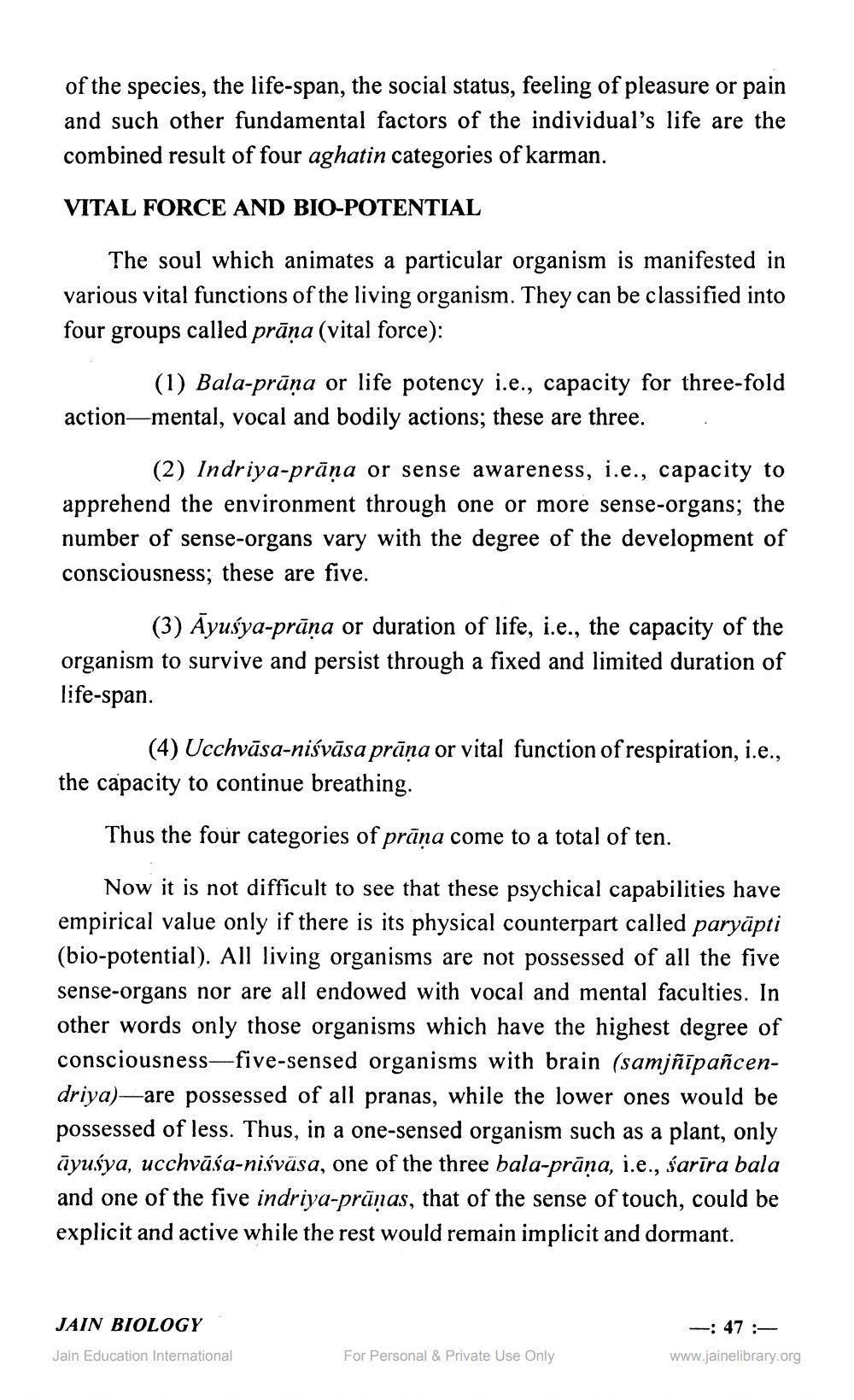________________
of the species, the life-span, the social status, feeling of pleasure or pain and such other fundamental factors of the individual's life are the combined result of four aghatin categories of karman.
VITAL FORCE AND BIO-POTENTIAL
The soul which animates a particular organism is manifested in various vital functions of the living organism. They can be classified into four groups called prāņa (vital force):
(1) Bala-prūņa or life potency i.e., capacity for three-fold action-mental, vocal and bodily actions; these are three.
(2) Indriya-prāņa or sense awareness, i.e., capacity to apprehend the environment through one or more sense-organs; the number of sense-organs vary with the degree of the development of consciousness; these are five.
(3) Āyusya-prāņa or duration of life, i.e., the capacity of the organism to survive and persist through a fixed and limited duration of life-span.
(4) Ucchvāsa-niśvāsa prāņa or vital function of respiration, i.e., the capacity to continue breathing.
Thus the four categories of prāņa come to a total of ten.
Now it is not difficult to see that these psychical capabilities have empirical value only if there is its physical counterpart called paryāpti (bio-potential). All living organisms are not possessed of all the five sense-organs nor are all endowed with vocal and mental faculties. In other words only those organisms which have the highest degree of consciousness-five-sensed organisms with brain (samjñīpañcendriya)—are possessed of all pranas, while the lower ones would be possessed of less. Thus, in a one-sensed organism such as a plant, only āyusya, ucсhvāśa-niśväsa, one of the three bala-prāņa, i.e., śarīra bala and one of the five indriya-prüņas, that of the sense of touch, could be explicit and active while the rest would remain implicit and dormant.
JAIN BIOLOGY
-: 47 :
Jain Education International
For Personal & Private Use Only
www.jainelibrary.org




